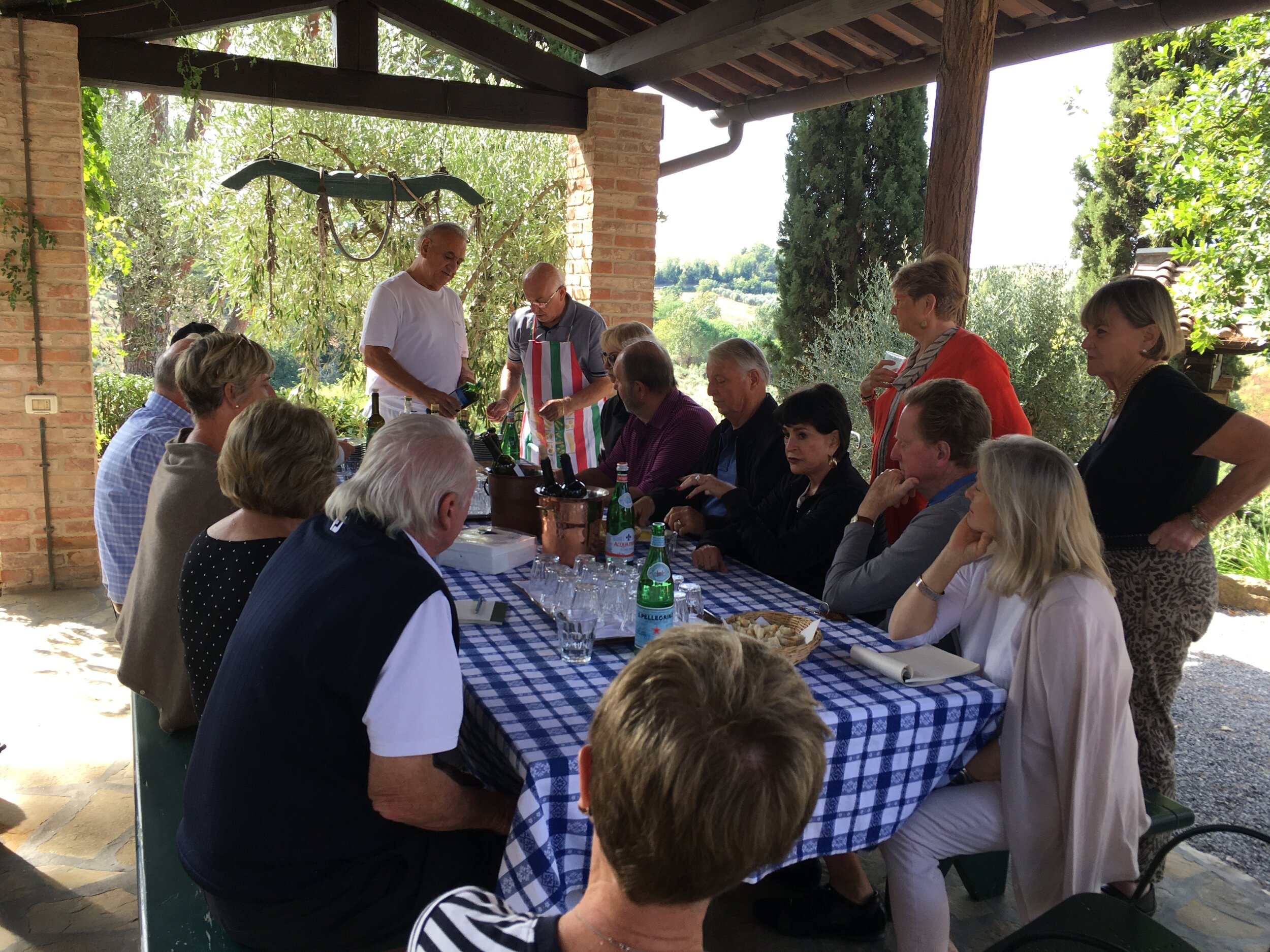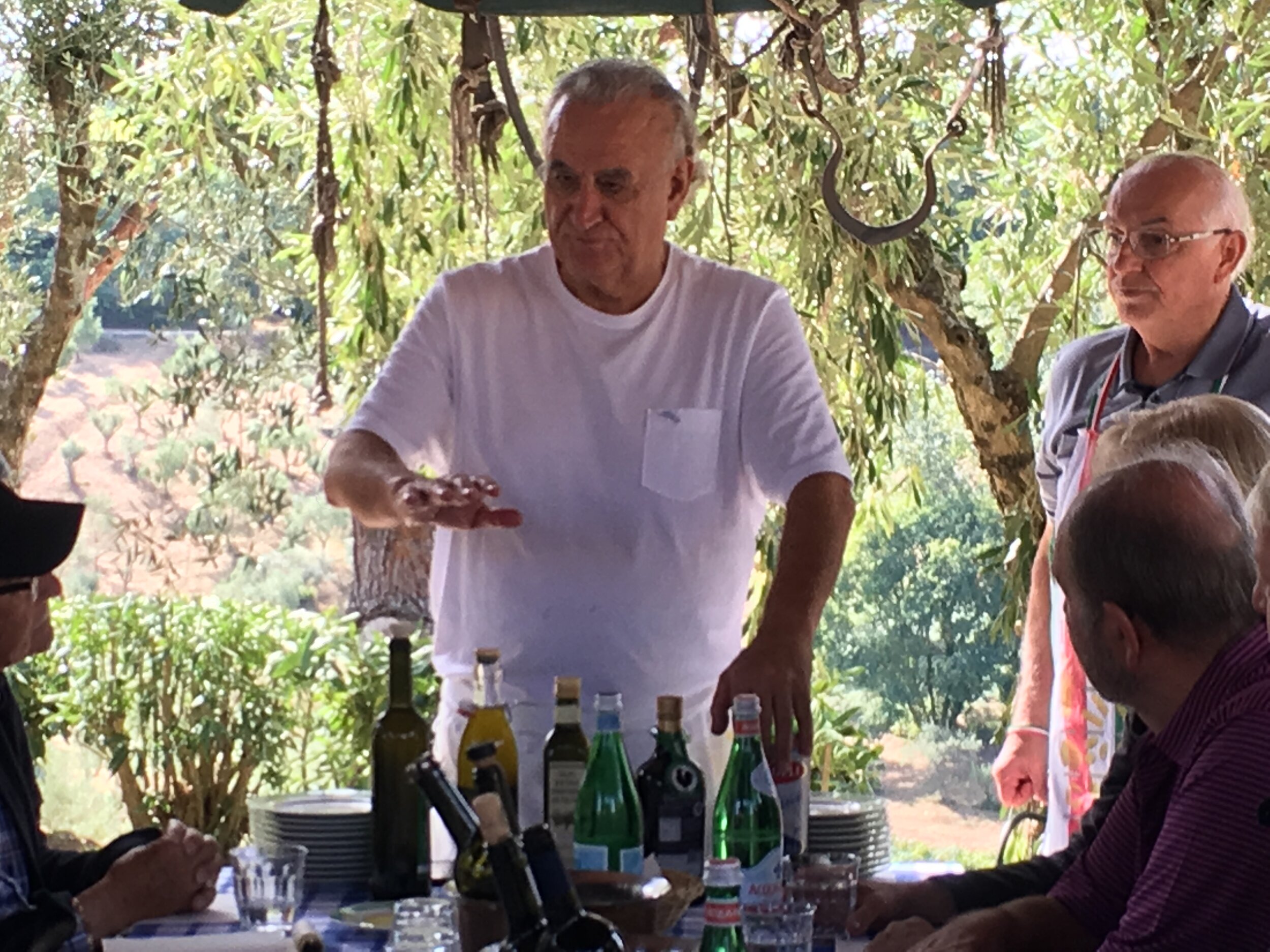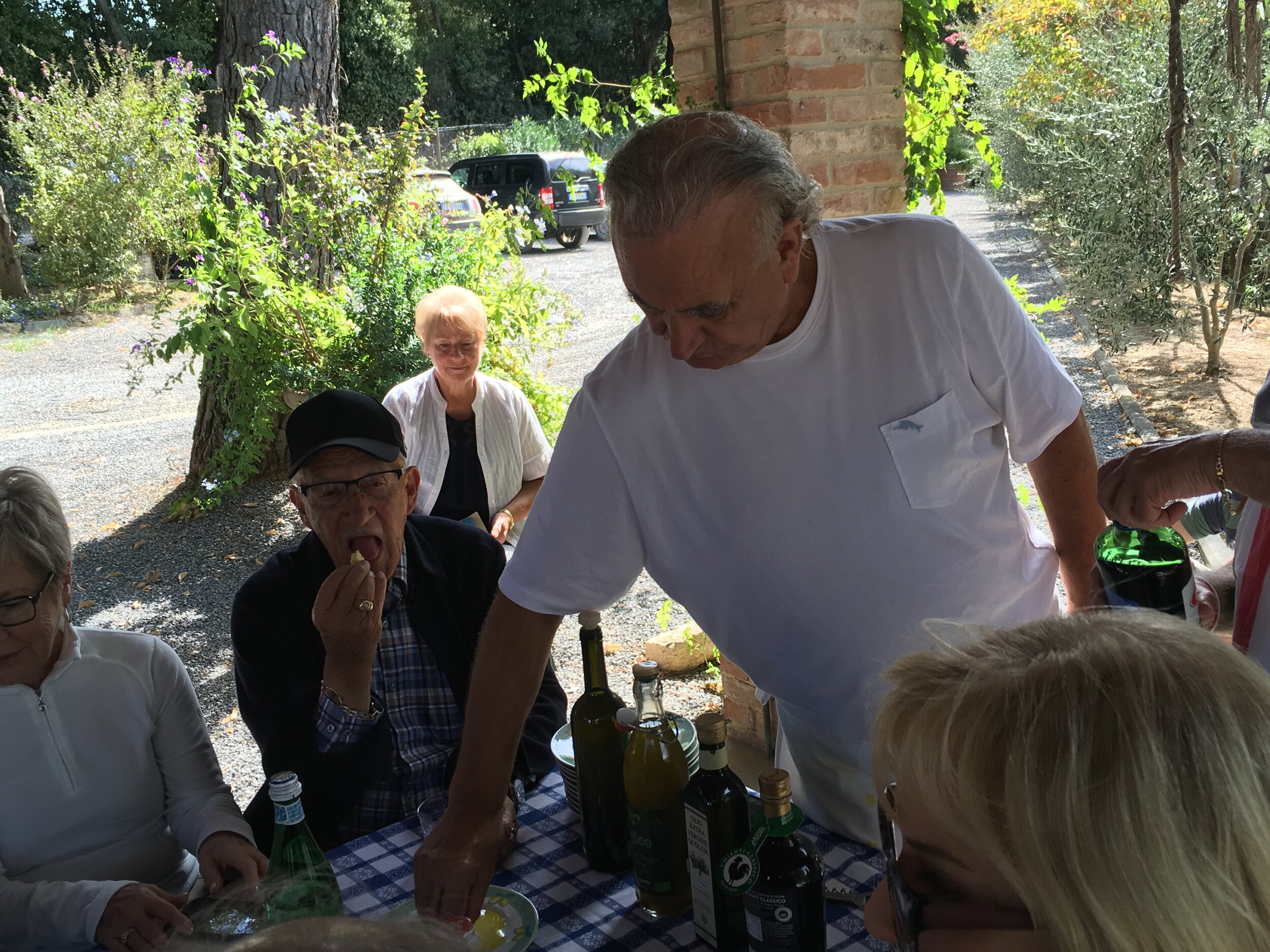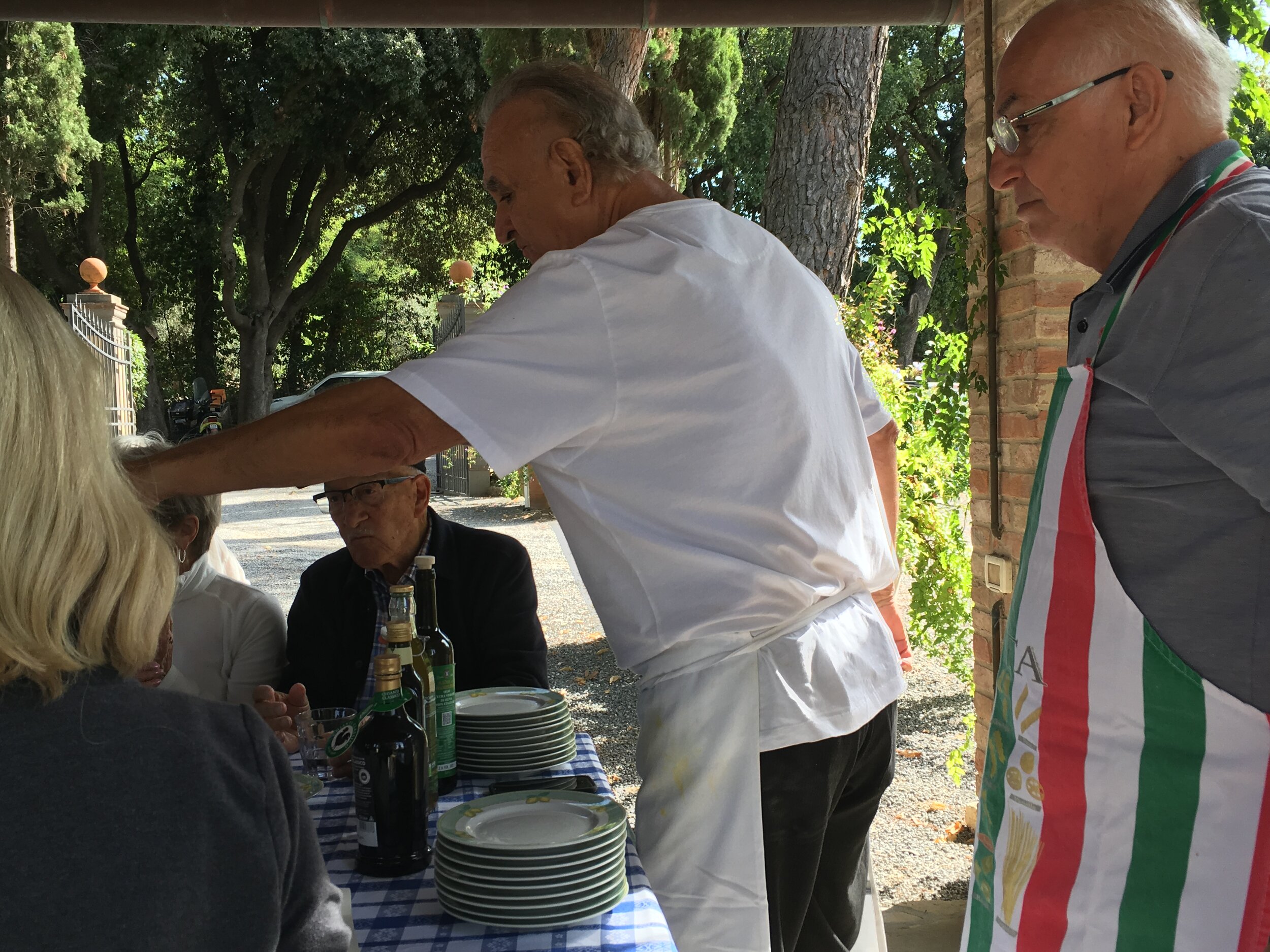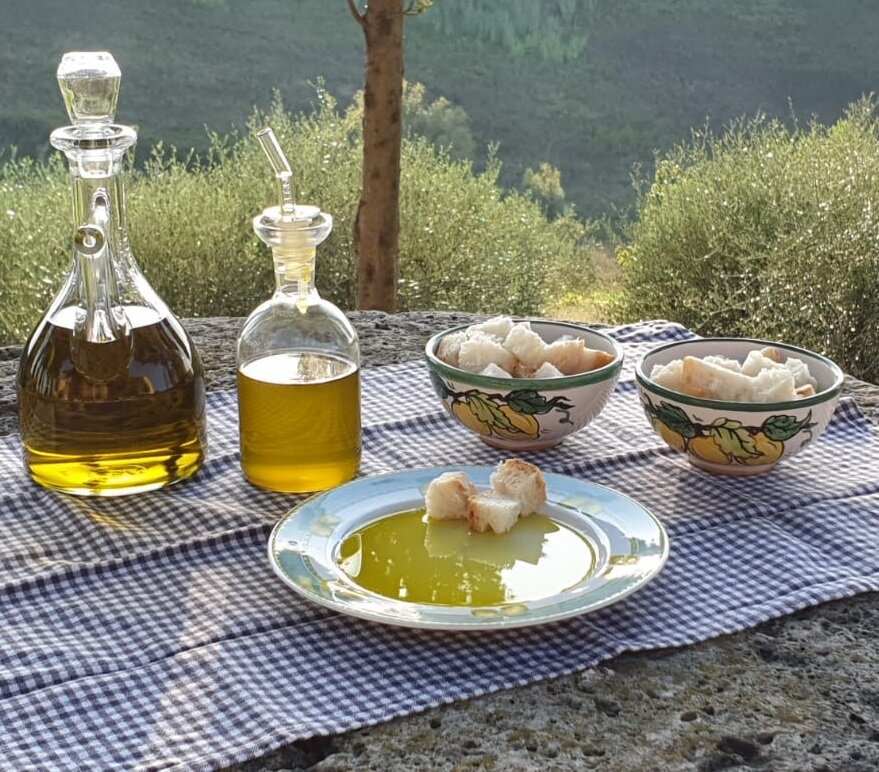Villa Delia Oil tasting
If you find yourself staring at a shelf of olive oils trying to decide which to buy, you’re not alone. The colors range from pale golden to brilliant green, and a tiny wax-sealed flask costs more than a two-liter-bottle yet they’re all labeled extra virgin. with so many brands, places of origin, and levels of quality, olive oil can be a complicated subject even for the experts. We would like to give you a basic understanding of this liquid gold (because good extra virgin olive oil is expensive). Good oil is scarce, and worldwide demand drives the price up. For an olive oil to be labelled extra virgin, the top designation, it must be derived entirely from the first pressing of the olives. The very best extra virgin oils are also made from hand-picked olives. The oleic acid content of an oil is another factor in its quality: the lower the acid, the better the oil.
Tuscans prefer the vivid green oil. The flavour elements and color of the oil vary, depending on the climate and soil where the trees grow. The delicate golden oils of Lucca are good with fish; the darker, intensely flavoured oils of the Chianti hills are good with vegetables and meat; and the salty, peppery oils of Tuscany’s south coast go with fish and lighter meats. Colour alone is no indicator of the quality of an oil, although it may give a clue about the intensity of the flavour. I suggest that you keep your oil stored in a place that is dry, cool and dark.
So use it! Have an oleic experience. Fresh extra virgin olive oil is a healthy way to enrich the flavor of almost any food.
